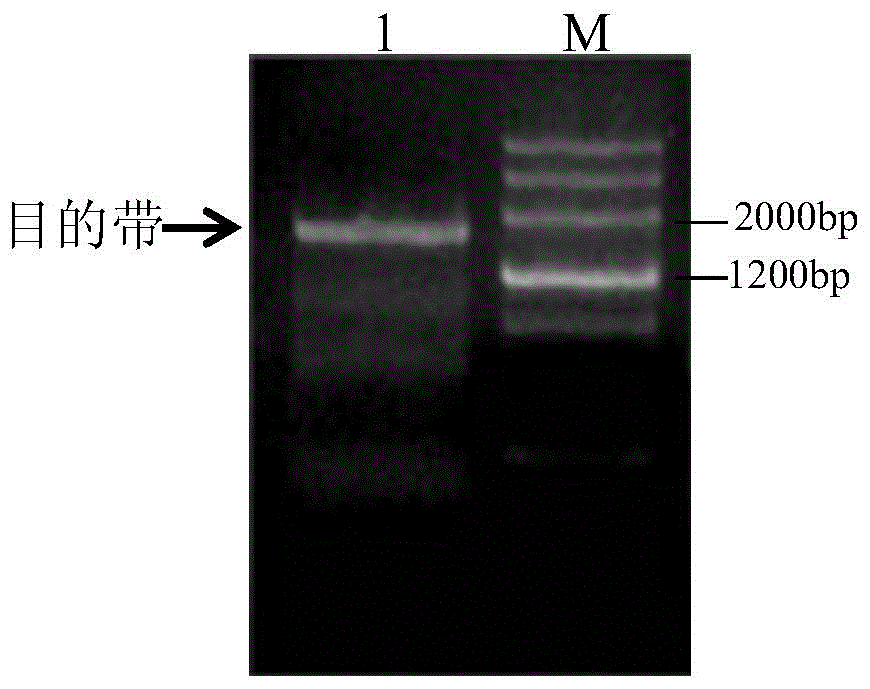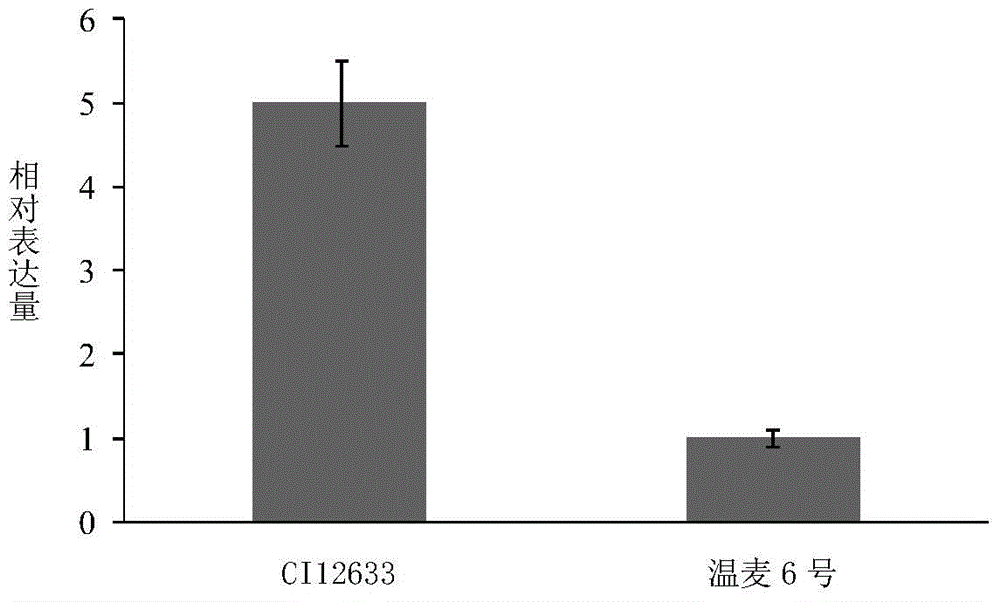Wheat-derived disease resistance-related protein tacpk7-r and its related biomaterials and applications
A protein and plant technology, applied in the direction of application, biochemical equipment and methods, and the use of vectors to introduce foreign genetic material, can solve the problems of slow progress in breeding for resistance to sheath blight and poor resistance
- Summary
- Abstract
- Description
- Claims
- Application Information
AI Technical Summary
Problems solved by technology
Method used
Image
Examples
Embodiment 1
[0072] Embodiment 1, the cloning of wheat resistance protein TaCPK7-R and its coding gene
[0073] The inventors of the present invention respond to sheath blight bacteria through gene chips of the anti-sheath blight wheat CI12633 and the sheath blight-susceptible wheat Wenmai 6, and the sheath blight-resistant wheat Shanhong wheat and the sheath blight-susceptible wheat Wenmai 6 respond to sheath blight Based on the analysis of the differential expression data of the two sets of genes of the strain, combined with the correlation analysis between the degree of resistance and the expression level, the protein kinase gene TaCPK7-R gene, which is resistant to sheath blight in wheat, was isolated and cloned from CI12633. The specific cloning method is as follows:
[0074] Extract the total RNA from the stems of wheat CI12633 inoculated with Rhizoctonia graminearum for 21 days, and reverse-transcribe the extracted RNA samples to synthesize the first-strand cDNA according to the pro...
Embodiment 2
[0082] Example 2, the acquisition of sheath blight resistant transgenic wheat and the identification of disease resistance
[0083] 1. Construction of recombinant expression vector
[0084] The complete ORF sequence of the TaCPK7-R gene was constructed on the high-efficiency expression vector pAHC25 of monocotyledonous plants, and the specific steps were as follows:
[0085] 1. Preparation of linearized plasmid: Digest the pAHC25 vector plasmid (about 9706bp) with Sma I and Sac I, excise the GUS gene (1888bp) between the restriction sites, 1% agarose gel electrophoresis, and agarose gel DNA The purification recovery kit recovered the linearized pAHC25 vector framework (about 7818bp).
[0086] 2. Acquisition of the target gene TaCPK7-R containing vector homology sites: Design a pair of primers TaCPK7-R-P25-F according to the full-length cDNA sequence of the TaCPK7-R gene: 5'- AACTCGGTATCTAGA ATGGGCAACTGCTGCGC-3' and TaCPK7-R-P25-R:5'- CGATCGGGGAAATTC CTATTGCGTTATCATCTA-3',...
Embodiment 3
[0132] Example 3, Breeding Gene-Silenced Wheat with Reduced Sheath Blight Resistance
[0133] 1. Silencing the TaCPK7-R gene in wheat CI12633 using virus-mediated gene silencing technology
[0134] 1. The two ends of the DNA fragment shown in the 1586-1829 nucleotides of sequence 1 in the sequence listing are respectively provided with Nhe I recognition sequences. After NheI digestion, the DNA fragment (244bp) shown in the 1586-1829th nucleotide of sequence 1 in the sequence listing is inserted into the BSMV-γ (BMSV virus's BMSV-γ) after the NheI enzyme linearization by the reverse insertion method γ vector), the DNA molecule (named antiTaCPK7-R) that is reverse complementary to the DNA fragment shown in the 1586-1829 nucleotides of sequence 1 in the sequence listing is driven by the T7 promoter of the γ vector to obtain recombination Vector BSMV-γ: anti TaCPK7-R.
[0135] 2. At the two-leaf one-heart stage, use the recombinant vector BSMV-γ:anti TaCPK7-R to transfect the se...
PUM
 Login to View More
Login to View More Abstract
Description
Claims
Application Information
 Login to View More
Login to View More - R&D
- Intellectual Property
- Life Sciences
- Materials
- Tech Scout
- Unparalleled Data Quality
- Higher Quality Content
- 60% Fewer Hallucinations
Browse by: Latest US Patents, China's latest patents, Technical Efficacy Thesaurus, Application Domain, Technology Topic, Popular Technical Reports.
© 2025 PatSnap. All rights reserved.Legal|Privacy policy|Modern Slavery Act Transparency Statement|Sitemap|About US| Contact US: help@patsnap.com



